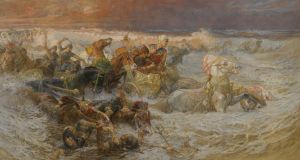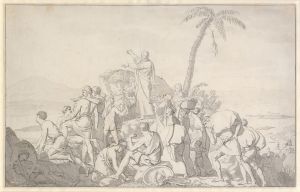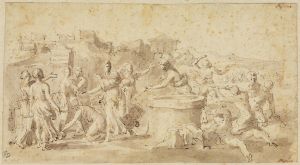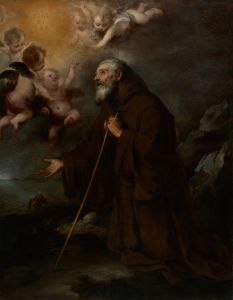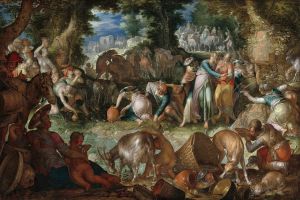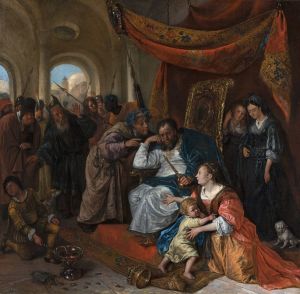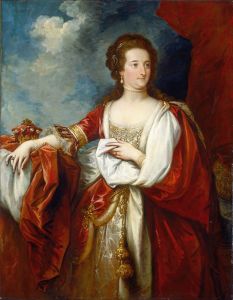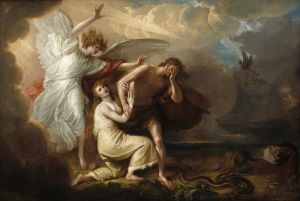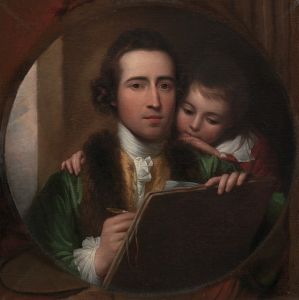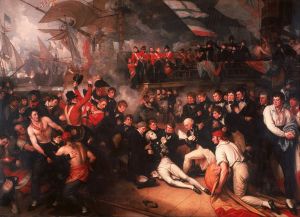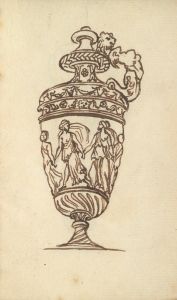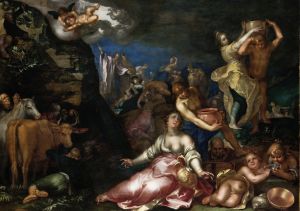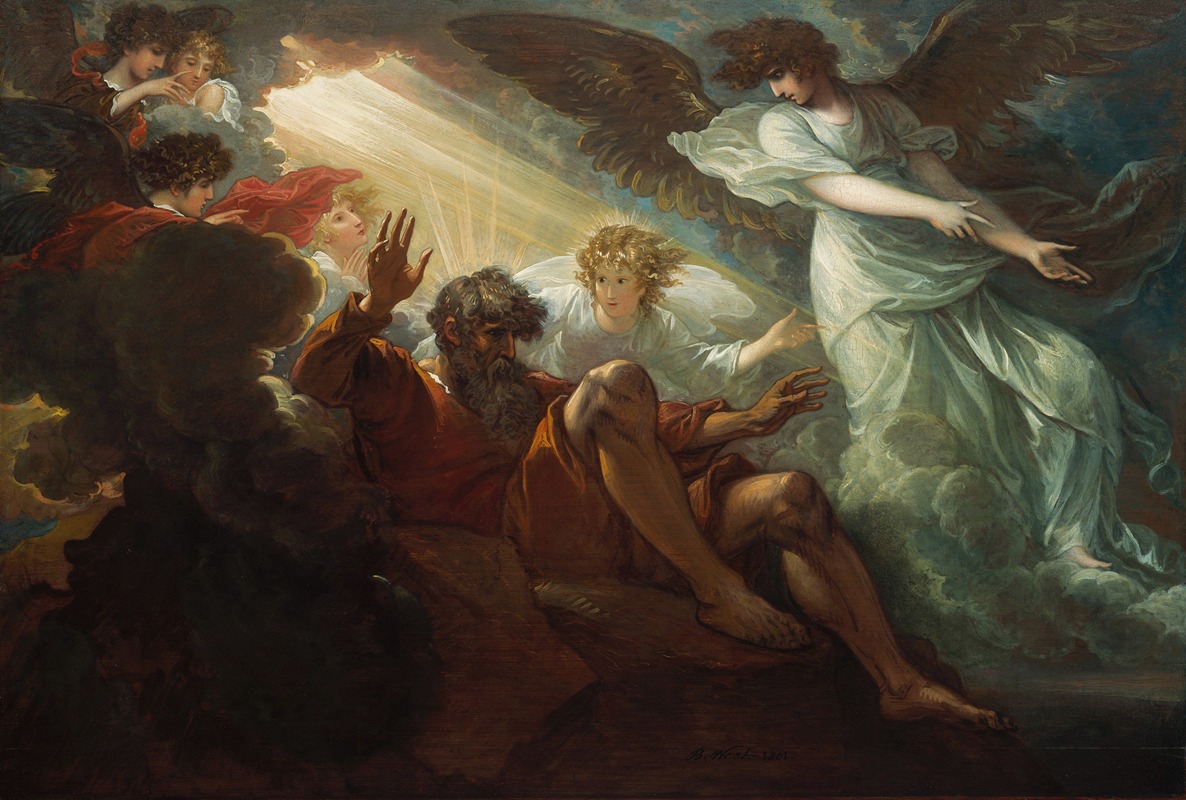
Moses Shown the Promised Land
A hand-painted replica of Benjamin West’s masterpiece Moses Shown the Promised Land, meticulously crafted by professional artists to capture the true essence of the original. Each piece is created with museum-quality canvas and rare mineral pigments, carefully painted by experienced artists with delicate brushstrokes and rich, layered colors to perfectly recreate the texture of the original artwork. Unlike machine-printed reproductions, this hand-painted version brings the painting to life, infused with the artist’s emotions and skill in every stroke. Whether for personal collection or home decoration, it instantly elevates the artistic atmosphere of any space.
Benjamin West's painting "Moses Shown the Promised Land" is a significant work by the Anglo-American artist known for his historical and religious compositions. West, who was born in 1738 in Pennsylvania, became a prominent figure in the art world during the late 18th and early 19th centuries. He was instrumental in the development of historical painting and served as the second president of the Royal Academy in London.
"Moses Shown the Promised Land" depicts a biblical scene from the Old Testament, specifically from the Book of Deuteronomy. In this narrative, Moses, the leader of the Israelites, is shown the Promised Land by God from Mount Nebo. However, he is informed that he will not enter it himself. This poignant moment captures the culmination of Moses' leadership and his role in guiding the Israelites out of Egypt and through the wilderness.
West's interpretation of this scene reflects his neoclassical style, which was characterized by a focus on clarity, order, and balance. His use of composition and color would have been intended to convey the solemnity and significance of the moment. The painting likely features Moses as a central figure, possibly depicted with the tablets of the Ten Commandments, which are often associated with him. The landscape around him would represent the vastness of the Promised Land, symbolizing hope and fulfillment for the Israelites.
West's work was heavily influenced by his studies in Italy, where he absorbed the techniques of Renaissance and Baroque masters. His ability to blend these influences with his own style made him a leading figure in the art world of his time. "Moses Shown the Promised Land" would have been created during a period when West was producing many works with religious and historical themes, aligning with the tastes and interests of his patrons.
The painting is an example of West's skill in narrative art, where he effectively communicates a story through visual means. His attention to detail and ability to capture the emotional weight of the scene would have been appreciated by contemporary audiences. West's works often carried moral and didactic messages, reflecting the Enlightenment ideals of reason and progress.
While specific details about the current location or the exact date of creation for "Moses Shown the Promised Land" are not readily available, West's contributions to art history remain significant. His influence extended beyond his paintings, as he played a crucial role in mentoring other artists and shaping the direction of art in both Britain and America.
In summary, Benjamin West's "Moses Shown the Promised Land" is a testament to his mastery of historical and religious subjects. Through his neoclassical approach, West captured a pivotal moment from the biblical narrative, highlighting his ability to convey complex themes with clarity and emotional depth. His work continues to be studied and appreciated for its artistic and historical significance.





